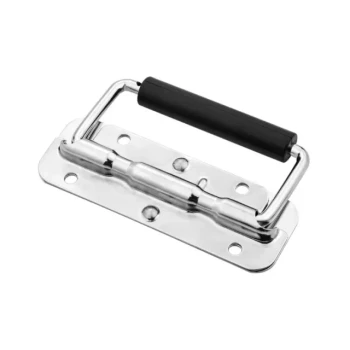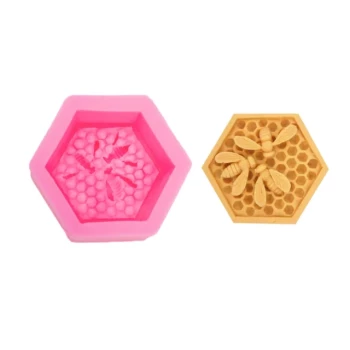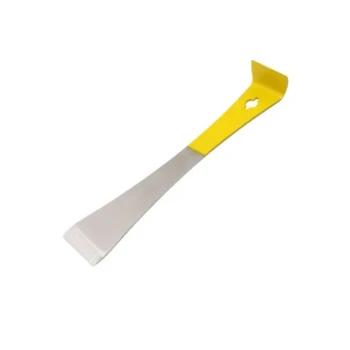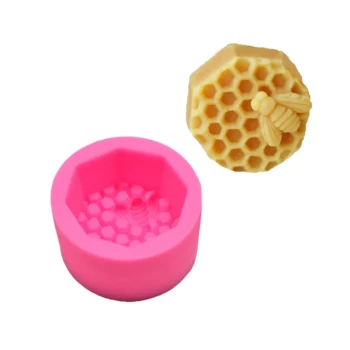The primary vectors for Varroa mite transmission between honey bee colonies are the bees themselves. Mites spread almost exclusively through two common bee behaviors: robbing, where bees from a strong colony steal honey from a weaker one, and drifting, where foraging bees accidentally enter the wrong hive. In both cases, the bees act as transport, carrying hitchhiking mites with them.
While beekeepers often focus on preventing mites within a single hive, the bigger challenge is that bee colonies are not isolated. The natural interaction between hives means your apiary is constantly exposed to mites from the surrounding environment, making internal management the only reliable defense.
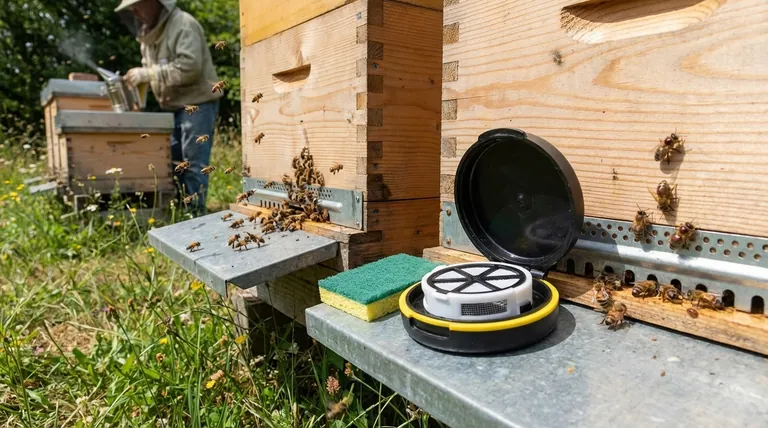
The Two Key Pathways for Mite Transmission
To effectively manage Varroa, you must first understand the specific mechanisms that allow them to breach your hive defenses. These are not exotic events but routine aspects of bee life.
Drifting Bees: An Unintentional Transfer
Bees, particularly new foragers, can easily become disoriented and lose their way. If their hive is located in a long, uniform row of other hives, they may drift into a neighboring colony by mistake.
When a drifting bee carrying a phoretic mite (a mite attached to its body) is accepted into a new hive, that mite can disembark and begin a new infestation. While a single drift event may only transfer a few mites, the cumulative effect over a season can be significant.
Robbing: A High-Speed Vector
Robbing is a far more aggressive and dangerous transmission route. It typically occurs when nectar is scarce, and a strong, populous colony identifies a weaker, less-defensible hive as an easy source of honey.
During a robbing event, hundreds or thousands of bees from the robbing colony invade the weak one. This mass interaction allows for a rapid exchange of mites in both directions. Often, the weak colony is already collapsing due to a high mite load, turning it into a "mite bomb" that contaminates the stronger, robbing colonies that prey upon it.
How the Mite's Life Cycle Enables Spread
The mite's ability to spread is directly tied to its two-phase life cycle. One phase allows it to reproduce, and the other allows it to travel.
The Phoretic Phase: The Mite's "Travel Mode"
For a mite to move from one hive to another, it must be in its phoretic phase. During this time, the mite clings to the body of an adult bee, feeding on its fat body tissue.
This parasitic feeding weakens the host bee. But more importantly, it positions the mite for transport. Any time a bee moves to another colony, whether by drifting or robbing, the mite goes with it.
The Reproductive Phase: The Hidden Threat
The ultimate goal of a traveling female mite is to reproduce. Once inside a new hive, it will detach from its host bee and seek out a brood cell containing a developing bee larva, entering it just before the cell is capped with wax.
Safely sealed inside, the mite lays multiple eggs. By the time the young bee emerges, a new family of mated female mites emerges with it, ready to attach to other adult bees and repeat the cycle. This is why even a single mite successfully transferring to a new hive is a serious threat.
Understanding the Risks and Realities
Accepting that mite transmission is inevitable is the first step toward effective management. Certain factors, however, drastically increase the risk.
High-Density Apiaries
Placing many hives in close proximity makes it easier for bees to drift between them. While efficient for space, this layout significantly increases the rate of natural mite spread throughout your own apiary.
Weak Colonies Are "Mite Bombs"
A failing colony is the single greatest transmission risk to an entire area. Its mite population explodes as its bee population dwindles, leading to an extremely high ratio of mites per bee. When this hive inevitably gets robbed out by its stronger neighbors, it effectively broadcasts its massive mite load across the landscape.
Ignoring Environmental Pressure
You can have a perfect mite management plan, but if a neighboring beekeeper neglects their hives, your colonies will face constant pressure from drifting and robbing. You cannot control your neighbors, but you must account for this external pressure in your own treatment schedule.
Making the Right Choice for Your Apiary
Understanding these transmission routes allows you to shift from a reactive to a proactive mite control strategy. Your goal is not to create an impenetrable fortress but to build resilient colonies.
- If your primary focus is preventing introduction: Be vigilant about hive spacing, use distinct landmarks to help bees orient, and actively monitor for robbing behavior, especially in late summer and fall.
- If your primary focus is controlling existing mites: Recognize that external sources are a constant pressure, making regular mite monitoring (like alcohol washes) and timely treatment of your own colonies the most effective strategy.
- If your primary focus is community health: Ethically manage your hives and euthanize or treat failing colonies before they collapse and become mite bombs for the surrounding area.
Your most powerful defense is maintaining strong, healthy colonies with low mite loads that can withstand the inevitable pressure from the environment.
Summary Table:
| Transmission Route | How It Happens | Risk Level |
|---|---|---|
| Drifting | Foraging bees accidentally enter the wrong hive. | Moderate (Cumulative) |
| Robbing | Strong bees invade weak hives to steal honey. | High (Rapid) |
| Key Factor | Weak colonies become high-density 'mite bombs'. | Critical |
Protect Your Investment and Your Community's Bee Health
Varroa mite transmission is a constant threat to commercial apiaries and distributors. Don't let drifting and robbing undermine your operation. HONESTBEE supplies the professional-grade equipment and supplies you need to implement effective, proactive mite management strategies.
Contact our expert team today to discuss wholesale solutions for building resilient, productive colonies.
Visual Guide
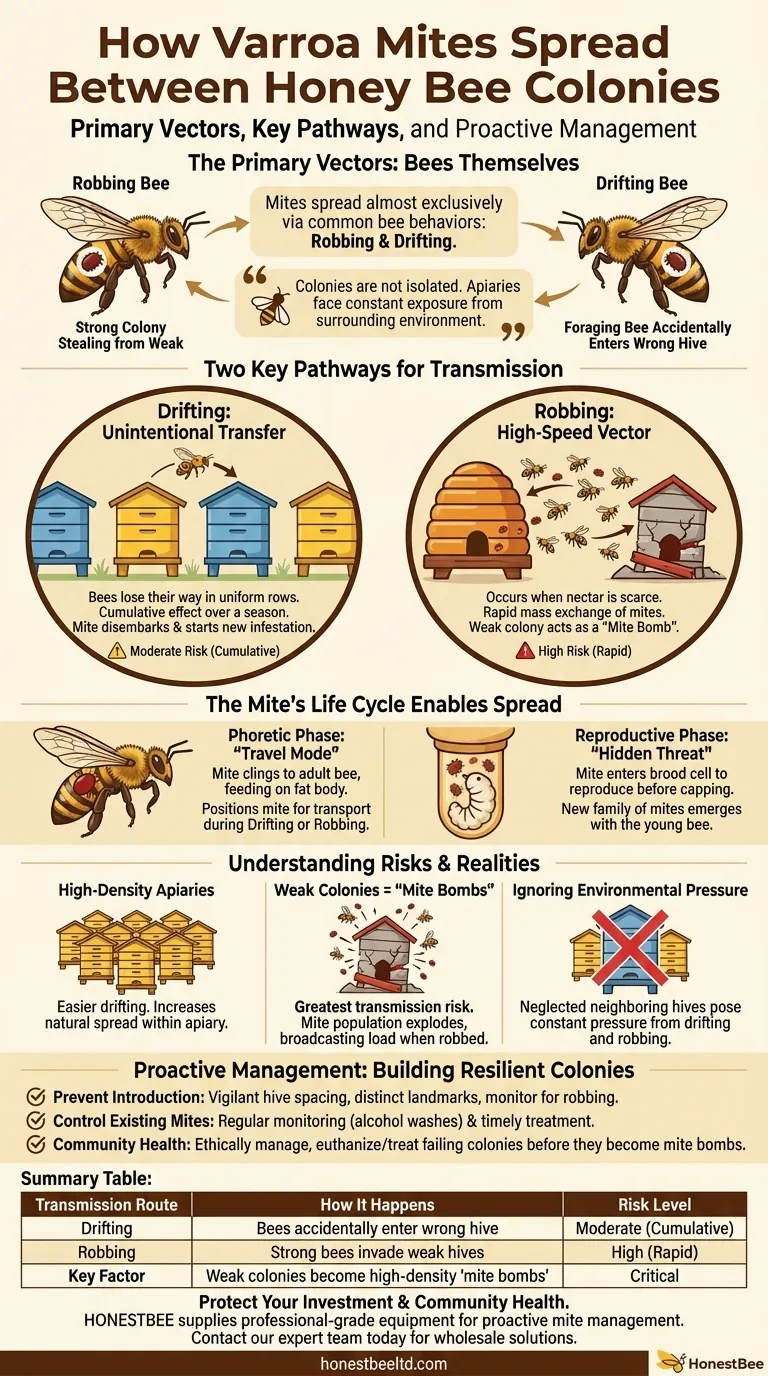
Related Products
- Adjustable Formic and Acetic Acid Dispenser for Bee Mite Treatment
- Varroa Easy Check Mite Tester Kit Counter Alcohol Wash Jar
- Professional Grade Foldable Beehive Handles
- 3D Beehive Silicone Skep Wax Candle Molds for Candles
- Black Plastic Beetle Barn Hive Beetle Trap for Beehives
People Also Ask
- What are phoretic mites? A Beekeeper's Guide to Monitoring Varroa Infestation
- What does Chewed Down Brood (CDB) indicate in bee colonies? A Sign of Varroa Mite Infestation
- What are some common predators and pests that target beehives? Protect Your Hives from Bears, Mites, and Beetles
- How can beekeepers ensure their hives survive the winter? A Guide to Colony Survival
- What is the focus of hive management during summer? Maximize Your Honey Harvest with Expert Tips





